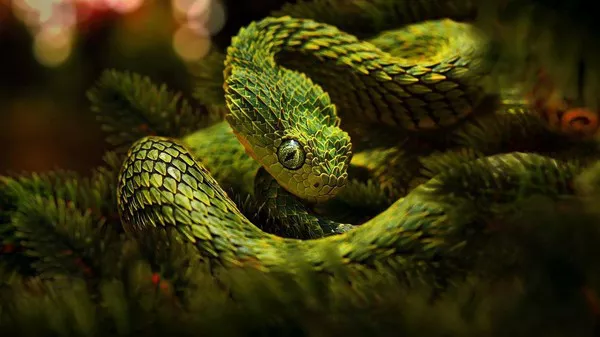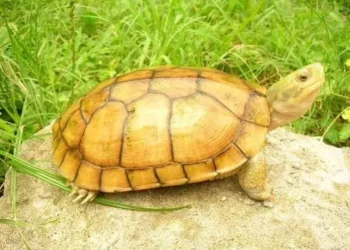Corn snakes (Pantherophis guttatus) are one of the most popular pet snakes worldwide, particularly for beginners. Known for their docile nature, ease of care, and striking patterns, they have earned a reputation as an accessible and low-maintenance reptile. But beyond their captivating appearance and friendly demeanor, the question arises: how intelligent are corn snakes?
To fully explore this, we need to dissect the concept of intelligence as it applies to animals, the evolutionary background of snakes, and the specific cognitive and behavioral traits exhibited by corn snakes. This article will look into their learning abilities, problem-solving skills, memory, and social behaviors, to objectively assess the intelligence of these fascinating reptiles.
Understanding Intelligence in Animals
Before evaluating the intelligence of corn snakes, it’s important to define what intelligence means in animals. Intelligence is often measured through a range of abilities, such as:
Problem-solving – The ability to navigate obstacles or solve challenges to obtain a desired outcome.
Learning – The capacity to acquire new skills or behaviors through experience or observation.
Memory – The ability to retain and recall information.
Communication – The way animals signal or interact with each other.
Social behaviors – The interaction with conspecifics or other species in meaningful ways.
While many animals, particularly mammals and birds, have demonstrated high levels of intelligence through complex social behaviors and problem-solving abilities, reptiles such as snakes are generally considered less cognitively advanced. However, this does not mean that they lack intelligence. It simply implies that their intelligence may manifest differently from that of other vertebrates.
The Evolutionary Context of Snake Intelligence
To understand snake intelligence, it’s essential to consider the evolutionary history of reptiles. Snakes are ectothermic (cold-blooded) reptiles that evolved approximately 100 million years ago. Unlike mammals and birds, which developed sophisticated cognitive skills to navigate complex environments and social structures, reptiles tend to rely on instinctual behaviors honed over millions of years of evolutionary pressures.
For snakes, survival strategies such as camouflage, predation, and defense are paramount. This means that much of their behavior is influenced by instinct rather than learned behavior. Corn snakes, like other snakes, are primarily solitary creatures, with limited social interactions beyond mating and occasional territorial disputes. This lack of social structure can lead to the assumption that they are not intelligent. However, a deeper dive into their cognitive abilities suggests that while their intelligence may not be comparable to that of social animals, they do exhibit surprising cognitive abilities that go beyond simple instinct.
Learning and Problem-Solving in Corn Snakes
One of the most telling indicators of intelligence in any species is its capacity to learn. In recent years, studies on reptilian learning have gained traction, revealing that snakes, including corn snakes, are capable of associative learning and problem-solving. These abilities are often measured through behavioral experiments involving food rewards, escape tasks, or environmental exploration.
Associative Learning
Associative learning occurs when an animal learns to associate one event with another, such as a stimulus and a reward. In corn snakes, this can be observed through feeding behaviors. For instance, they can learn to associate certain environmental cues—such as the opening of a tank, a change in temperature, or the presence of a specific object—with food.
In a laboratory setting, corn snakes have been shown to adapt to feeding schedules and environments. If they are consistently fed in a particular part of their enclosure or at a specific time, they will begin to anticipate feeding time and move toward that location or show heightened activity before being fed. This indicates that corn snakes are capable of learning patterns and using that information to alter their behavior.
Problem-Solving and Escape Behavior
Problem-solving in animals often involves finding solutions to challenges that result in a desired outcome, such as obtaining food or escaping from a predator. While snakes are not typically viewed as problem solvers, they can demonstrate basic problem-solving abilities when faced with specific challenges.
Corn snakes have been observed successfully navigating through mazes to find food or escape from enclosures. In some studies, researchers have placed obstacles in front of food sources, requiring the snake to find an alternative route or solution to access the food. Corn snakes, in these experiments, have shown the ability to assess their environment, identify possible routes, and choose the correct path to reach the reward. Although this behavior may seem simple, it suggests that corn snakes are capable of spatial learning and adapting their behavior based on past experiences.
Puzzle Boxes
A recent experiment with various snake species, including corn snakes, involved puzzle boxes that required snakes to manipulate their surroundings in order to access food. The snakes were given boxes with sliding doors or rotating mechanisms that had to be moved in a specific way to obtain a food reward. While snakes generally required more trials than mammals to successfully open these boxes, they eventually learned how to operate them. This ability to overcome a novel challenge highlights a level of cognitive flexibility not traditionally associated with snakes.
Memory and Retention in Corn Snakes
Memory is another essential component of intelligence. An animal’s ability to remember information—whether related to food, danger, or social interactions—can significantly impact its survival. While memory has been extensively studied in mammals and birds, it is less understood in reptiles. However, corn snakes, like other reptiles, do possess memory capabilities that allow them to navigate their environment effectively.
Spatial Memory
Corn snakes rely heavily on spatial memory, particularly when hunting and navigating their environment. In the wild, they often follow specific routes while foraging and can remember the locations of hiding spots, prey, and water sources. In captivity, corn snakes can recall where they have previously encountered food and will return to those locations in anticipation of another meal.
In one experiment, corn snakes were placed in a large enclosure with multiple hiding spots. Over time, the snakes demonstrated the ability to remember which hiding spots were more secure and where they had previously encountered food, returning to those areas more frequently. This ability to recall spatial information indicates that corn snakes possess a working memory that helps them optimize their foraging behavior and avoid threats.
Sensory Perception and Environmental Interaction
Intelligence in animals is also closely tied to how they perceive and interact with their environment. While corn snakes may not rely on vision as heavily as mammals or birds, they possess a range of specialized sensory tools that allow them to navigate their world effectively.
Heat Sensing
One of the key adaptations of corn snakes is their ability to sense heat through specialized pits located near their jaws. This ability, known as thermoreception, allows corn snakes to detect the body heat of their prey, even in complete darkness. While this is an instinctual trait, the ability to process this sensory information and use it to locate and capture prey involves a level of cognitive processing.
Chemoreception
Corn snakes, like other reptiles, rely heavily on chemoreception, the ability to detect chemical cues in their environment. They use their forked tongues to “taste” the air, collecting scent particles and transferring them to the Jacobson’s organ, located in the roof of their mouth. This organ processes the chemical signals and helps the snake identify prey, predators, and mates.
The use of chemoreception to detect prey and predators involves more than just instinct. Corn snakes can learn to recognize familiar scents, which can influence their behavior. For instance, a corn snake exposed to the scent of a familiar prey item may become more active and begin hunting behaviors, while the scent of a predator may trigger avoidance behaviors.
Social Behavior and Interaction
Social intelligence, which involves understanding and responding to the behavior of other animals, is often a key indicator of intelligence in mammals and birds. However, snakes are generally solitary animals, which has led to the assumption that they lack complex social intelligence. Corn snakes do not engage in social bonding or pack behaviors, and their interactions with other snakes are usually limited to mating or territorial disputes.
See Also: What Is the Size of a Corn Snake?
That said, there is some evidence that corn snakes, like other reptiles, are capable of recognizing individuals and adjusting their behavior accordingly. In captivity, some snake owners have reported that their corn snakes display familiarity with their handlers, becoming less stressed or more active when interacting with a familiar person compared to a stranger. While this is anecdotal, it suggests that corn snakes may have the ability to recognize specific individuals based on scent or other environmental cues.
Stress Responses and Emotional Intelligence
The ability to process and respond to stress is another indicator of intelligence. Corn snakes, like other reptiles, are capable of experiencing stress, which can affect their behavior and physiological responses. While they may not exhibit the same range of emotions as mammals, they do show signs of fear, stress, and discomfort when exposed to threatening or unfamiliar environments.
Corn snakes in captivity can exhibit signs of stress when handled improperly or when their environment is not suited to their needs. For example, they may become agitated or defensive if they feel threatened or exposed, and they may refuse to eat if they are stressed. Conversely, they can also adapt to new environments and handling routines, suggesting that they are capable of learning and habituating to non-threatening stimuli.
The Intelligence of Corn Snakes in Comparison to Other Animals
When comparing the intelligence of corn snakes to other animals, it’s important to recognize that different species have evolved distinct forms of intelligence suited to their ecological niches. Corn snakes, as solitary reptiles, have developed cognitive abilities that support their survival, such as spatial memory, problem-solving in foraging and escape scenarios, and the ability to learn from their environment.
While corn snakes may not display the same level of social intelligence or problem-solving capabilities as mammals or birds, they possess a form of intelligence adapted to their specific needs. Their ability to learn, remember, and adapt to their environment demonstrates that they are far from mindless, instinct-driven creatures.
Conclusion
Corn snakes may not fit the traditional mold of animal intelligence seen in highly social or tool-using species, but they exhibit a distinct set of cognitive skills that reflect their evolutionary adaptations. They are capable of learning from their environment, solving simple problems, and retaining memory of important survival-related information.
Their intelligence is largely shaped by their solitary, survival-focused lifestyle, emphasizing the importance of sensory perception, spatial memory, and associative learning. While they may not be “intelligent” in the way humans often define the term, corn snakes possess a form of intelligence that allows them to thrive in their environments, both in the wild and in captivity.
In conclusion, corn snakes are intelligent in their own unique way. Their behaviors and cognitive abilities, while more subtle than those of mammals and birds, reflect a sophisticated level of interaction with their environment that goes beyond simple instinct. For reptile enthusiasts, understanding these abilities not only deepens appreciation for these creatures but also informs better care practices to enrich their lives in captivity.
Related Topics:


























